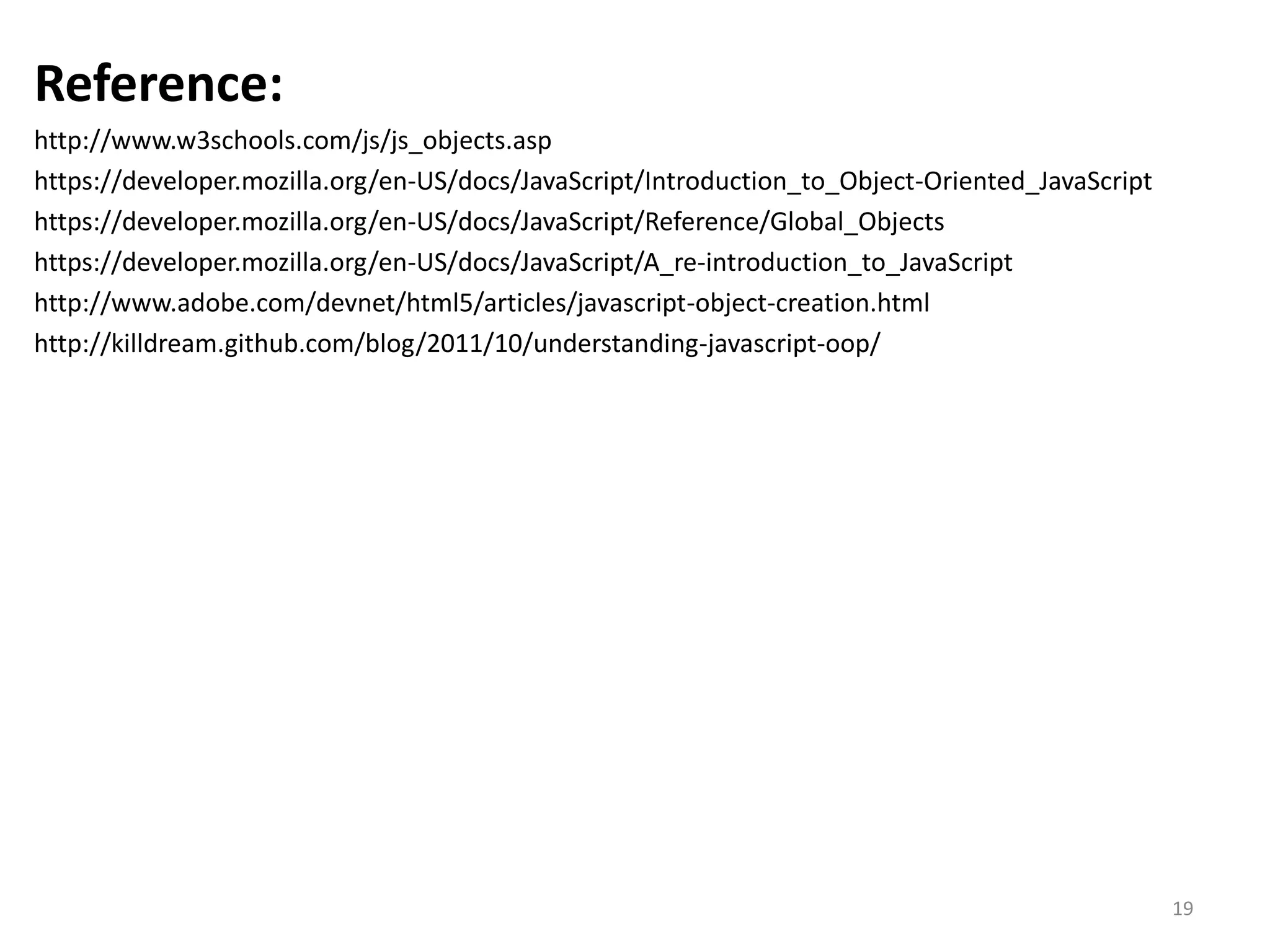The document presents an overview of object-oriented programming in JavaScript, emphasizing its prototype-based nature and key concepts such as classes, objects, properties, methods, and inheritance. It explores creating instances, accessing properties and methods, and demonstrates various examples of object manipulation. The presentation highlights that JavaScript offers strong OOP capabilities despite lacking traditional class constructs.
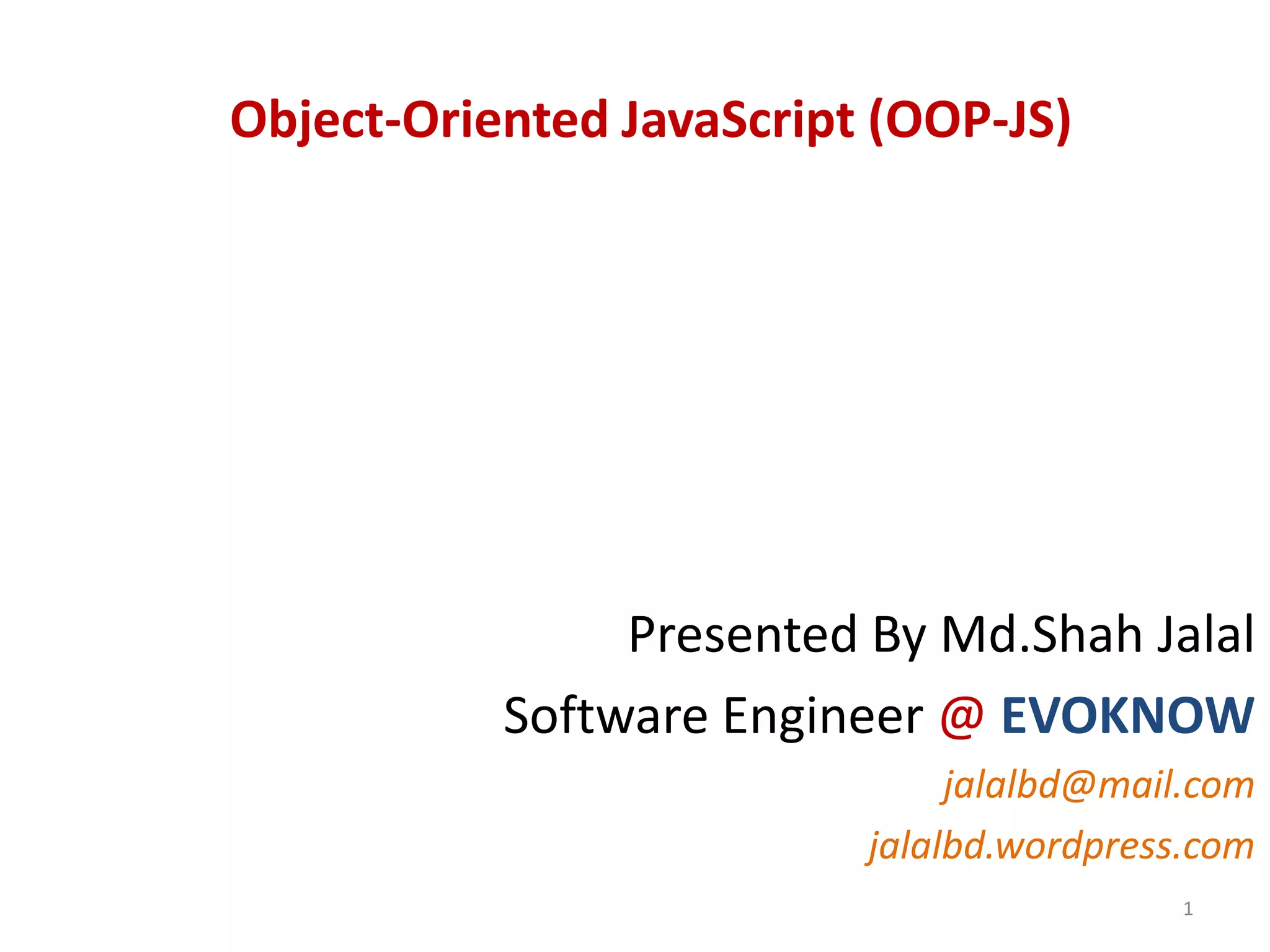

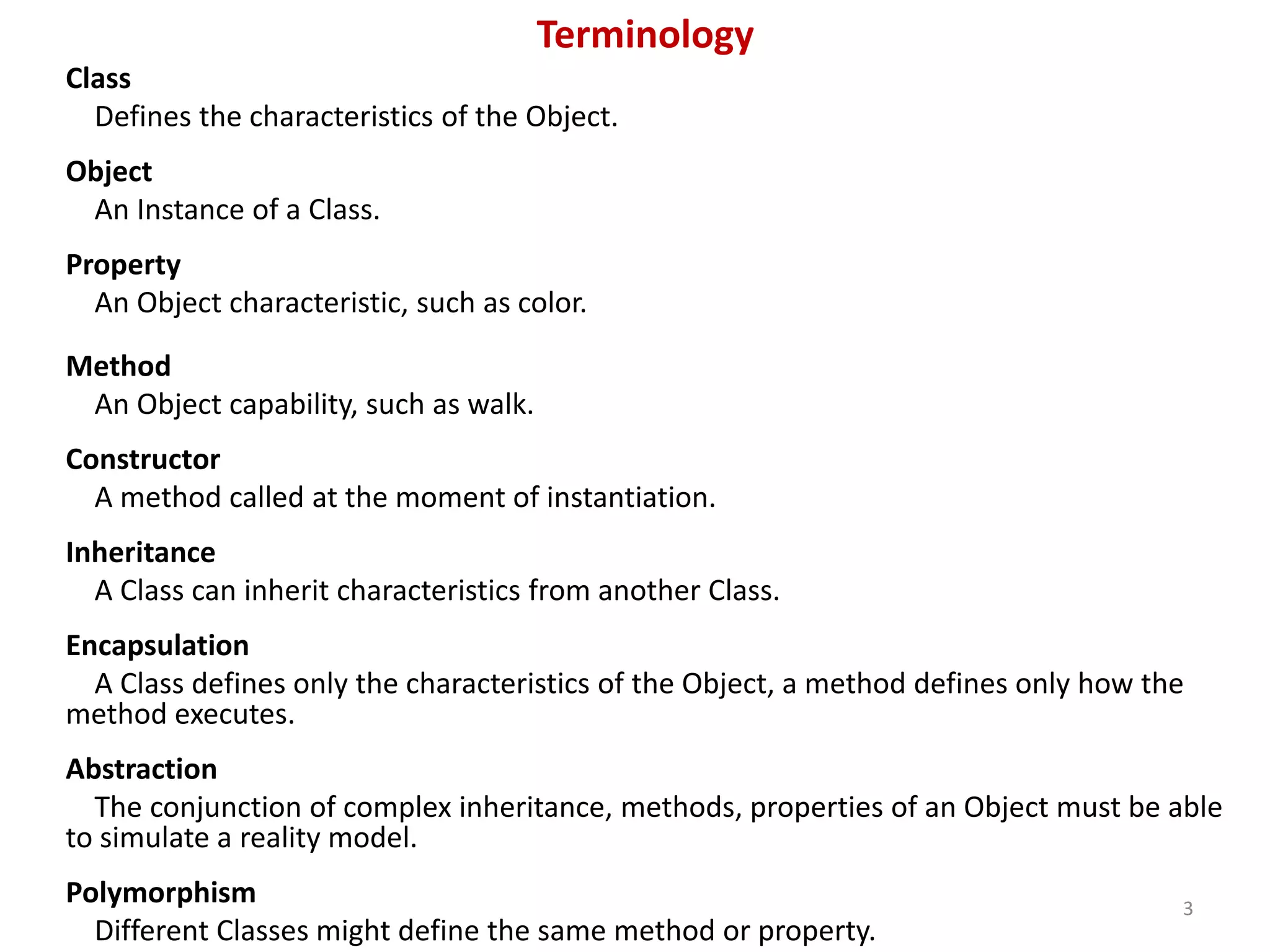
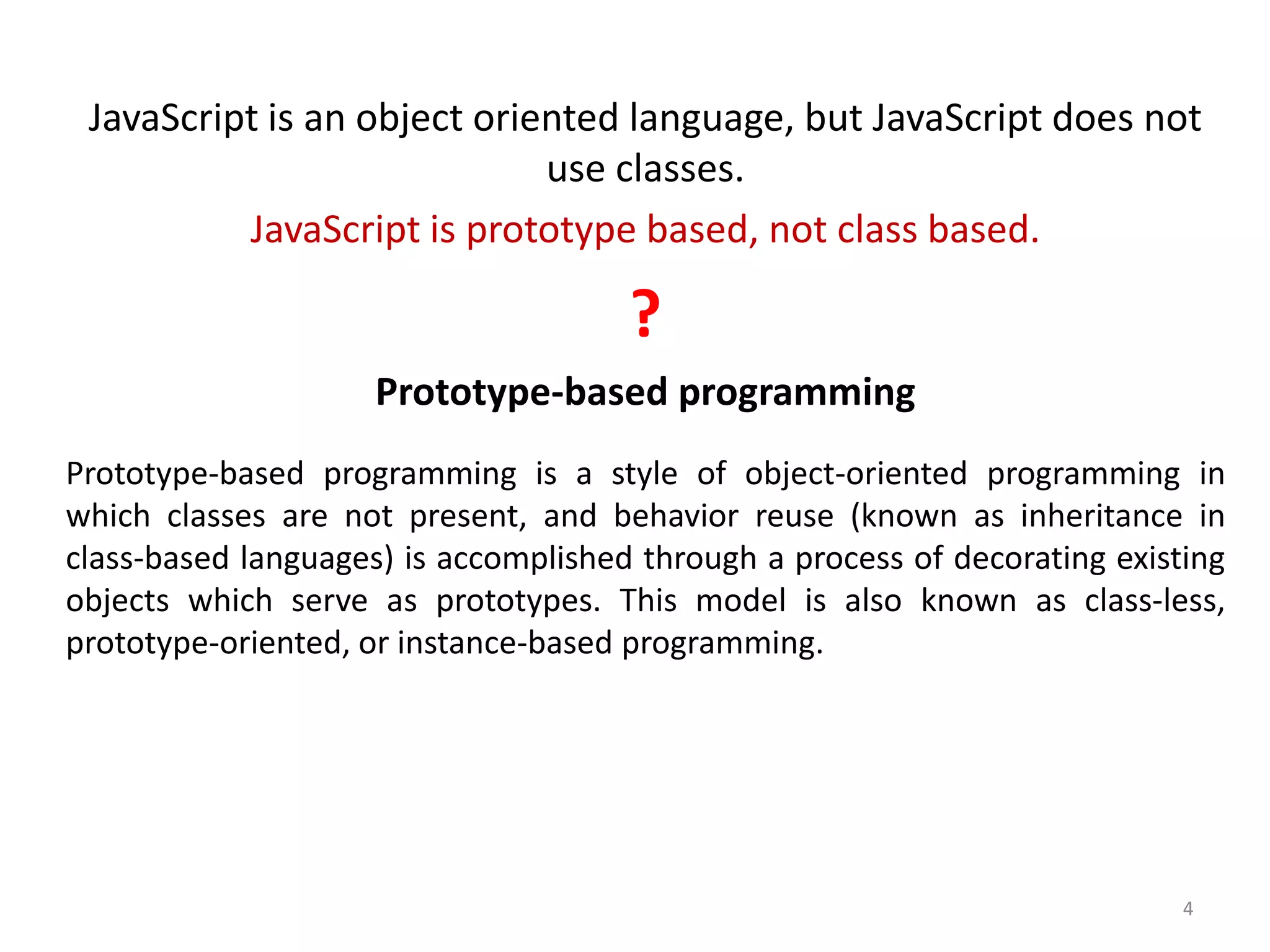

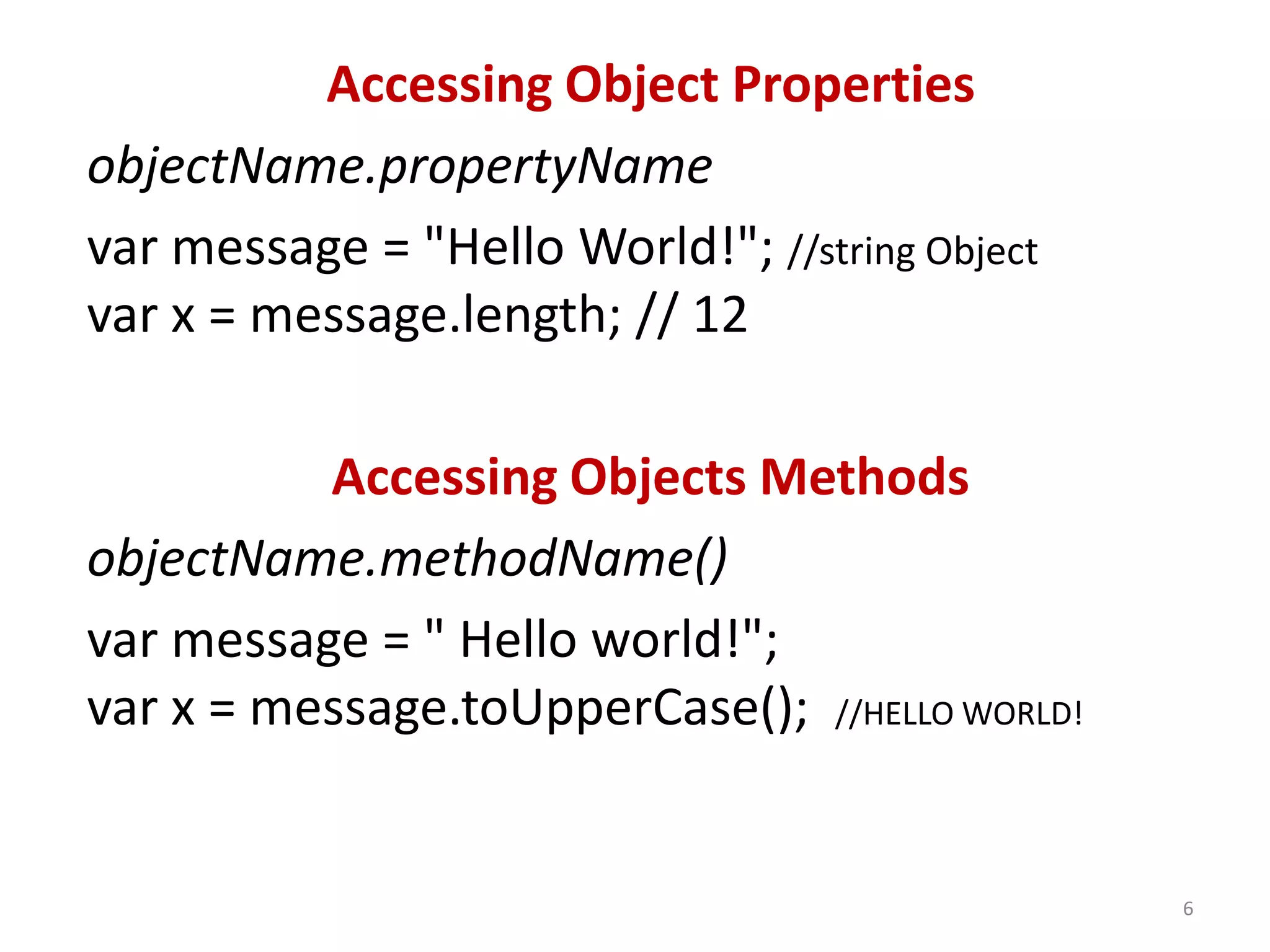

![Creating a Direct Instance var person = Object.create(null); person['name'] = 'Jyoti'; person['age'] = 25; person ['gender'] = 'Male'; alert("Name : "+ person.name+" Age : "+person.age+" Gender : "+person.gender); person.name = 'Jalal'; person.age = 26; person.gender = 'Male'; alert("Name : "+ person.name+" Age : "+person.age+" Gender : "+person.gender); alert(Object.getOwnPropertyNames(person)); // name,age,gender // array alert(Object.getOwnPropertyNames(person).length);// 3 8](https://image.slidesharecdn.com/objectorientedjavascript-130123002214-phpapp01/75/Object-oriented-javascript-8-2048.jpg)
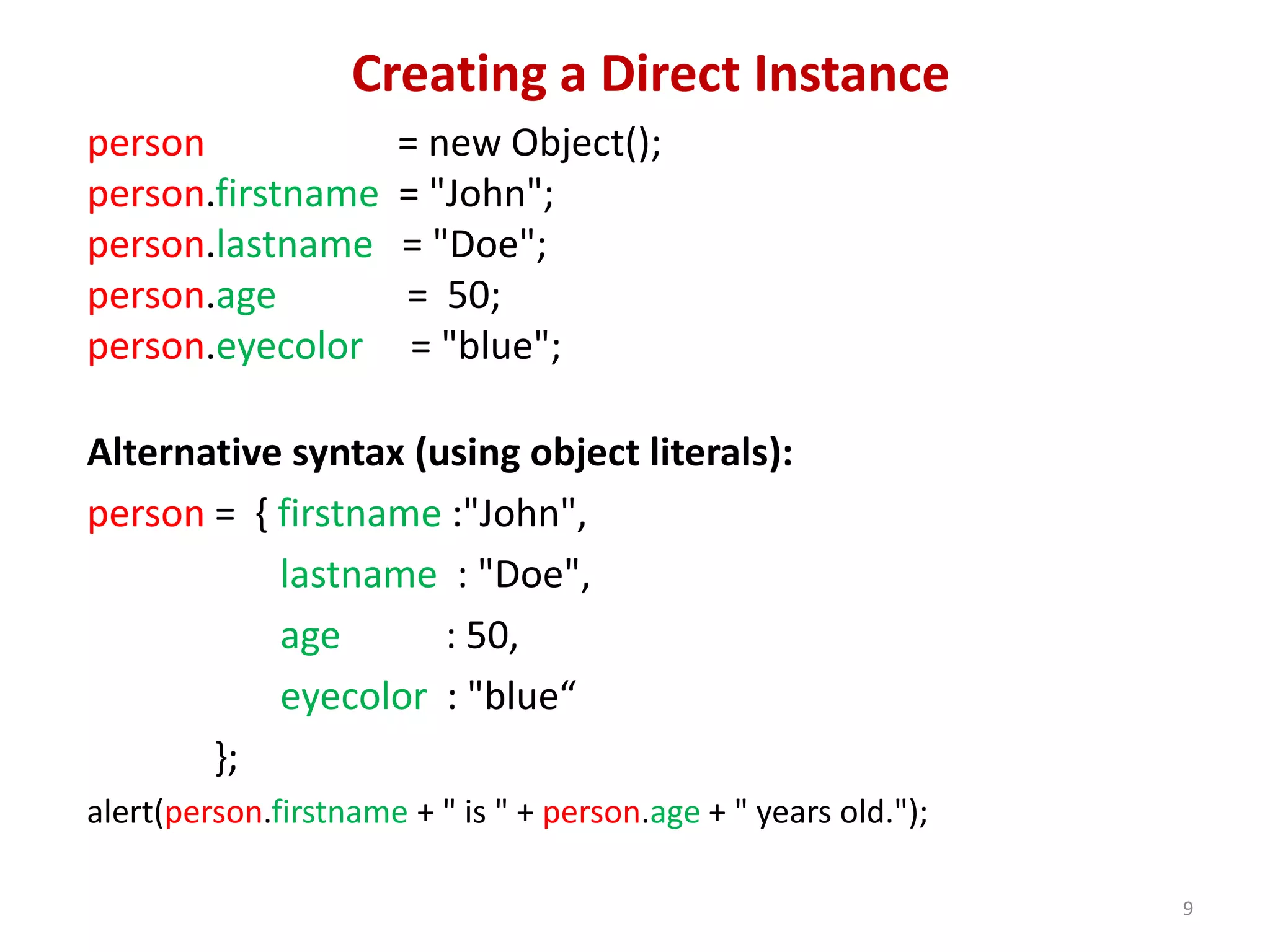
![Creating a Direct Instance var person = { first_name : 'Shah' , last_name : 'Jalal' , age : 19 , gender : 'Male' , get name() { return this.first_name + ' ' + this.last_name } , set name(new_name) { var names names = new_name.trim().split(/s+/) this.first_name = names['0'] || '' this.last_name = names['1'] || '' } } alert(person.name); person.name = 'Rushow Khan'; alert(person.name); 10](https://image.slidesharecdn.com/objectorientedjavascript-130123002214-phpapp01/75/Object-oriented-javascript-10-2048.jpg)
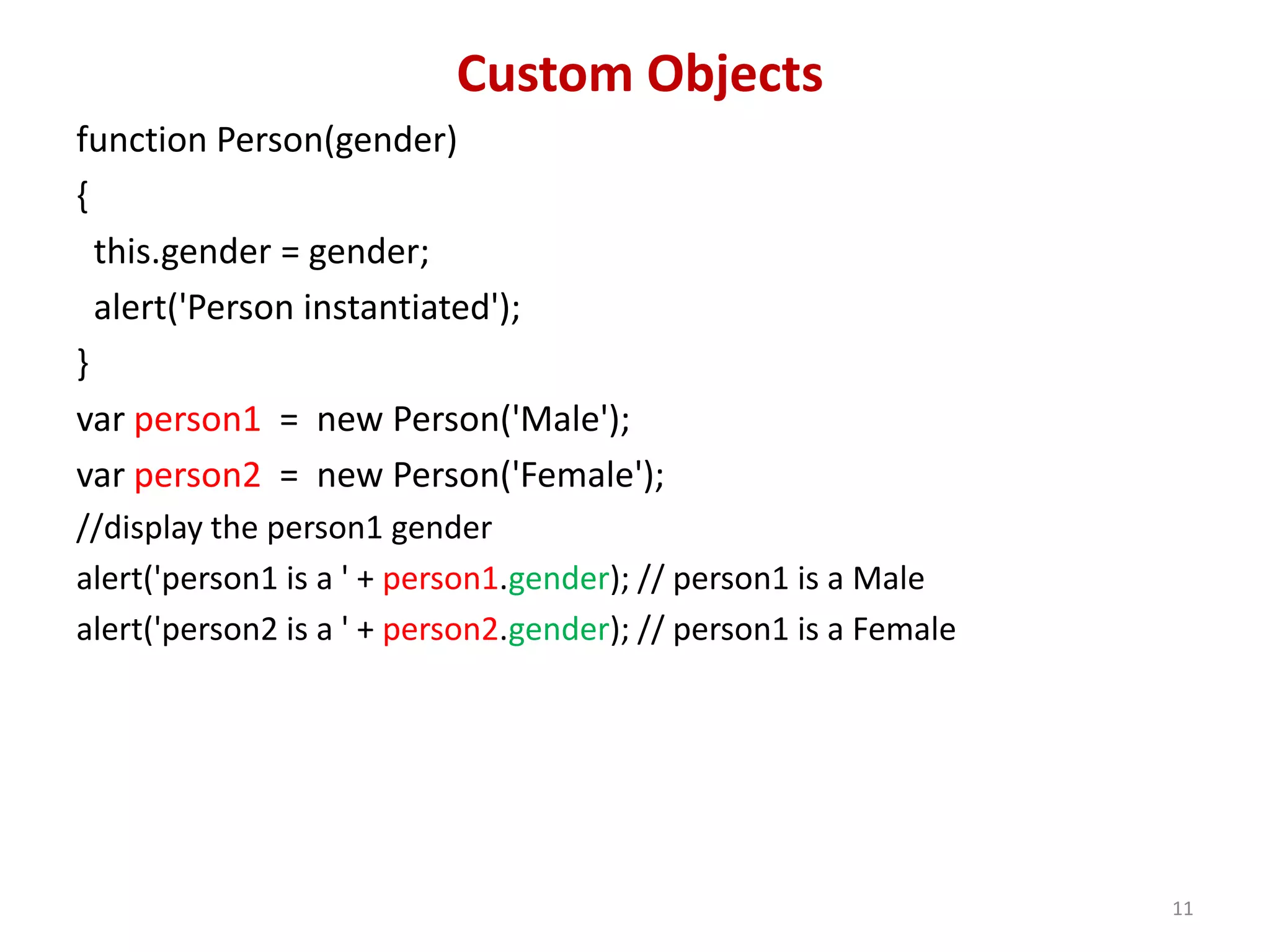
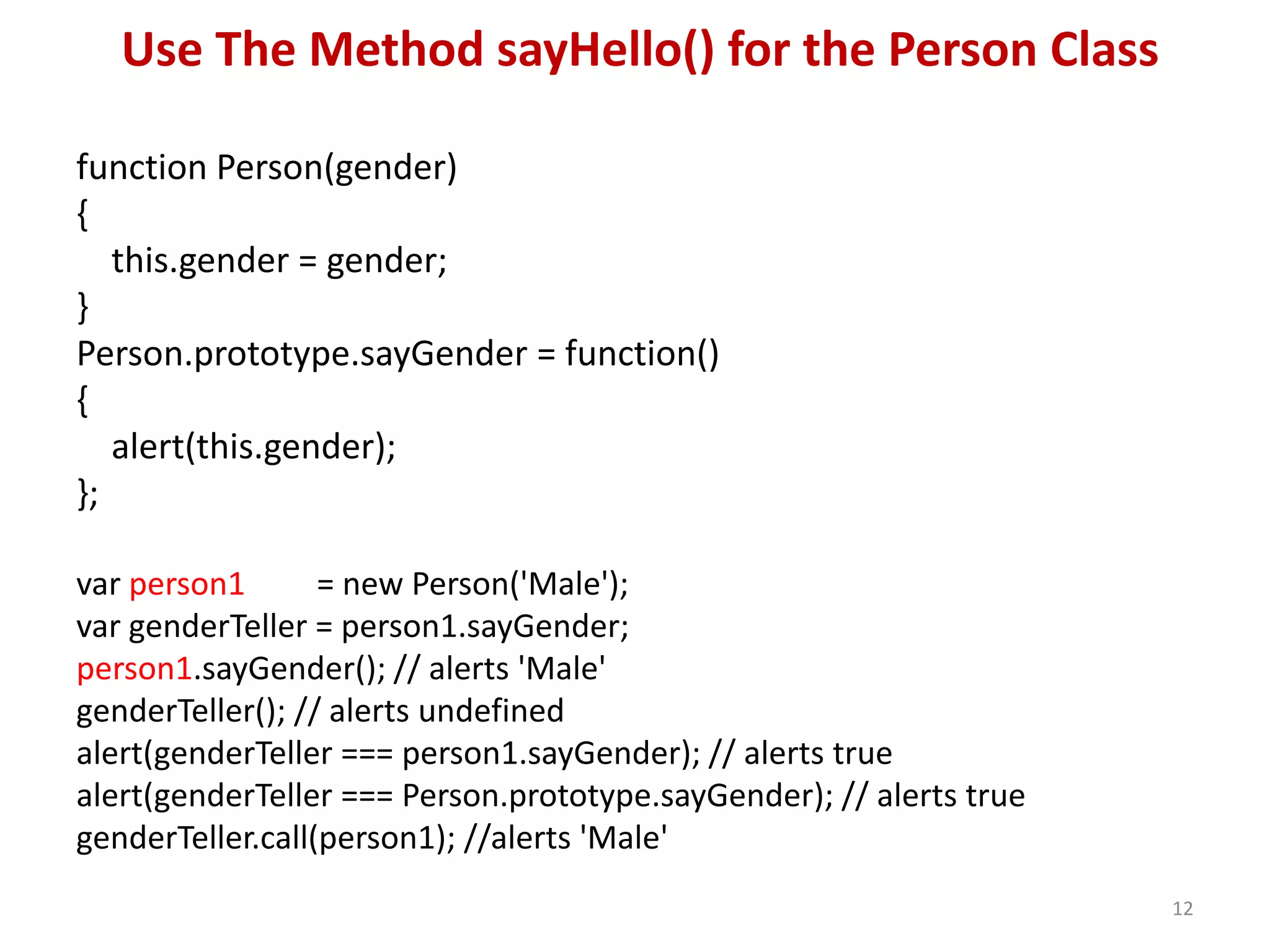

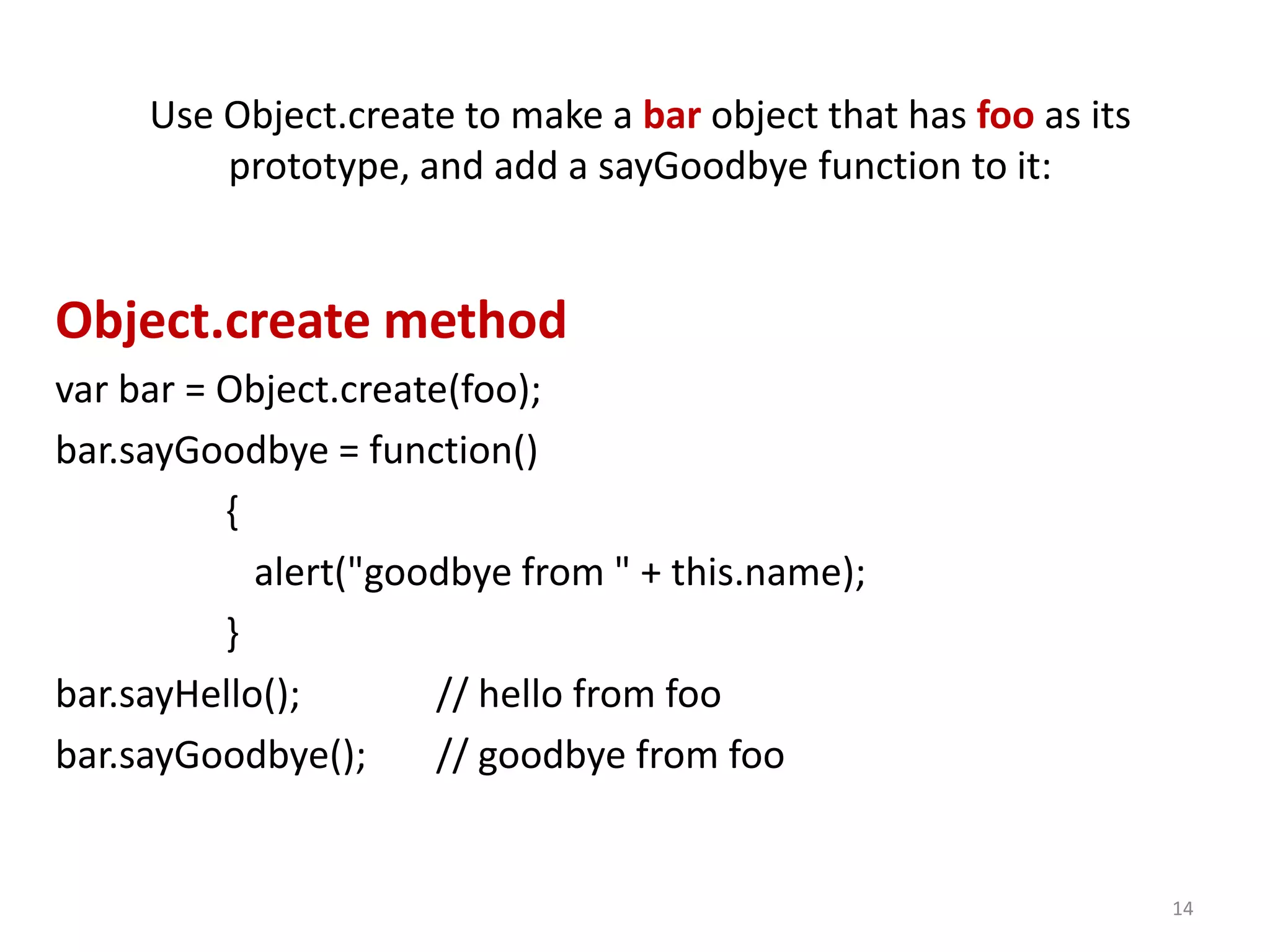
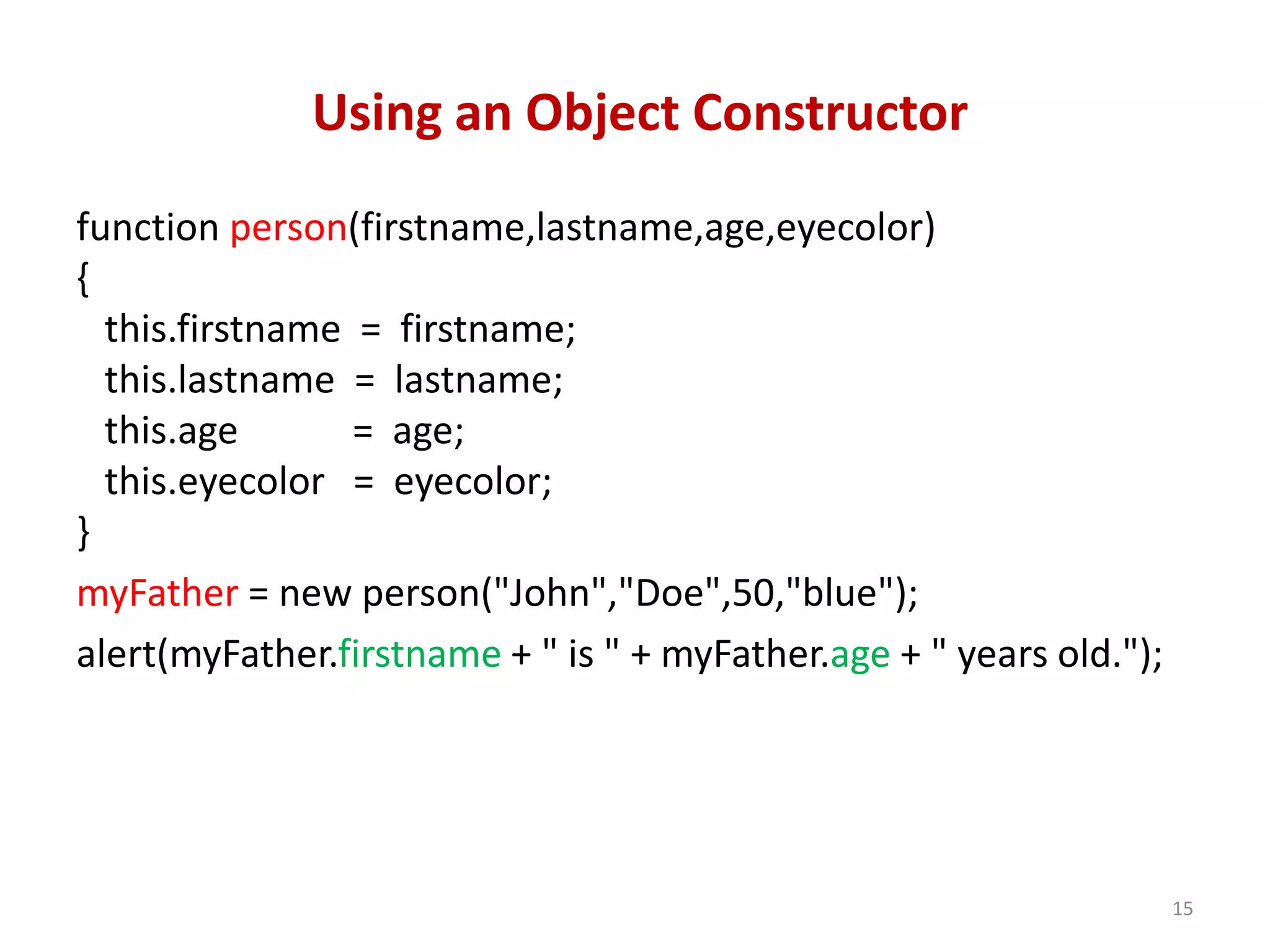
![JavaScript for...in Loop function myFunction() { var x; var txt=""; var person = {fname:"John",lname:"Doe",age:25}; for (x in person) { txt=txt + person[x]; alert(txt); } } myFunction(); 16](https://image.slidesharecdn.com/objectorientedjavascript-130123002214-phpapp01/75/Object-oriented-javascript-16-2048.jpg)
![Multi dimensional person = { firstname:"John", business:{ a:{ s:"software", h:"hardware", e:"electronics" }, b:"garments" c: ["A", "B", 2, 3] } }; alert(person.firstname); // Jhon alert(person.business.a.s); // software alert(person.business.b); // garments alert(person.business.c[2]); // 2 console.log(person); 17](https://image.slidesharecdn.com/objectorientedjavascript-130123002214-phpapp01/75/Object-oriented-javascript-17-2048.jpg)

